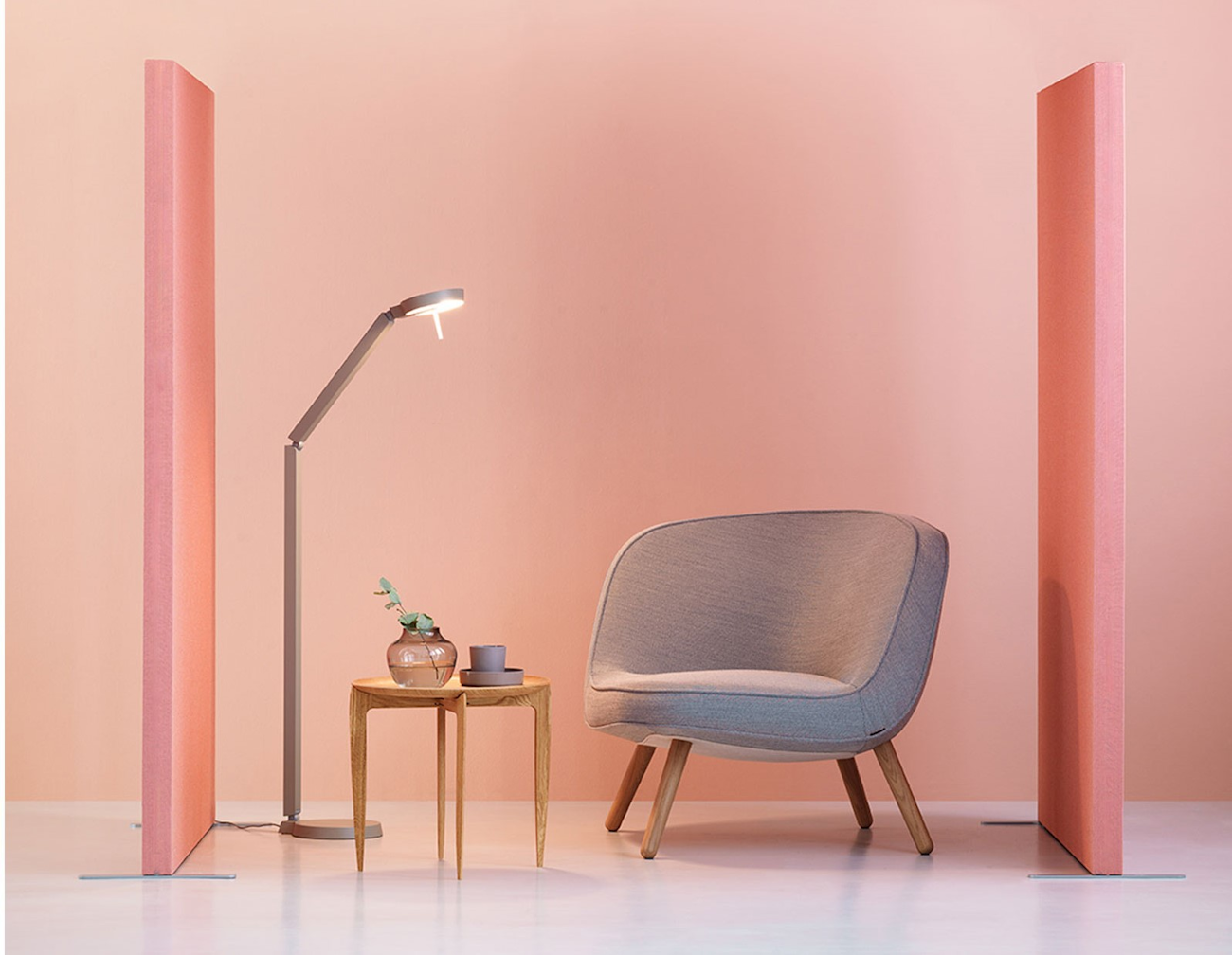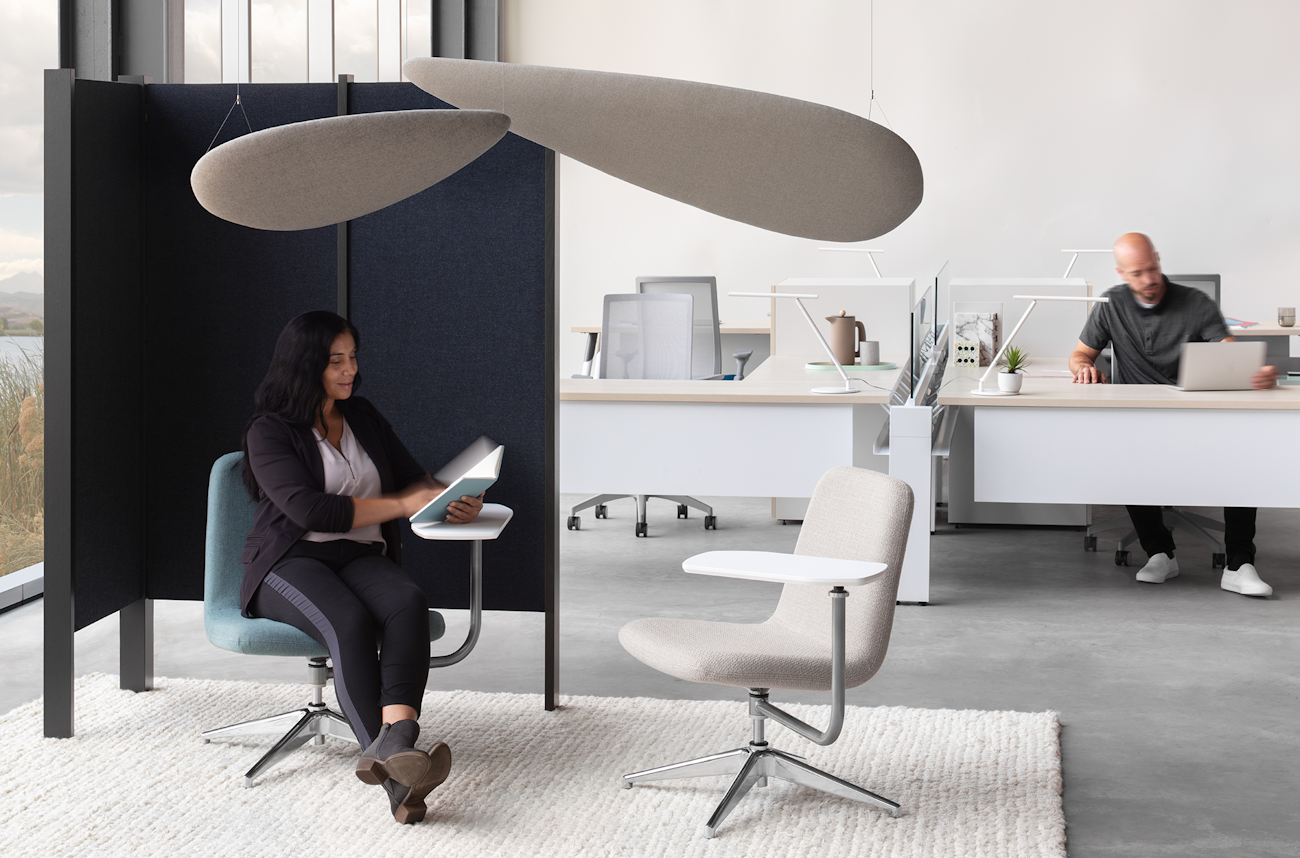Insights
Understanding Acoustic Furniture Through Science

Understanding the science of sound and how sound waves travel through air and solid materials is the key to finding out how to reduce it. As you may already know, sound is an energy produced when things vibrate. The energy then travels outward, away from the source, and this makes objects and the air around us vibrate until what is left of the energy reaches our ears.
Without intervention, the sound will echo off the walls, floor, and ceiling and once it gets loud enough, conversation and communication will require more attention. This causes the “ear fatigue” effect where we have to work harder at listening and speak louder to be heard to overpower other competing sounds- and nothing is more frustrating than that in the workplace when trying to focus.
In this article, we will be exploring all there is to know about acoustics and the basics about the science of sound to help you better understand how acoustics work and the best way to reduce any sound problems that may be faced in the workplace.

Absorption and Insulation of Sound
In order to find the right balance between sound and tranquillity, sound must be absorbed and insulated in the right places.
It is important to know, there is a difference between absorbing and insulating sound. The differences are as follows:
- Absorption: the sound causes friction. The moving air particles vibrate the absorption material, and the sound loses its energy. Within an office environment in particular, it is important to make use of absorption because it affects the reverberation time – meaning the time required for sound to fade away. Sound absorption helps to increase productivity in the office and can help employees to feel more relaxed.
- Insulation: the process of isolating a sound so that it does not end up in a place where it is not wanted. Usually, insulation is used in rooms to prevent noise from outside entering the room. Sound insulation is achieved with hard and heavy materials. Did you know that the degree of sound insulation of a product such as a system wall is expressed in an Rw value? An Rw value, also known as the Weighted Sound Reduction Index, would indicate up to which dB level sound is blocked in a room. The Rw value can also be used for comparing the sound insolation properties of different materials using the following formula: if a sound source produces 50 dB and a wall has an Rw value of 42 dB, then the sound transmission is 8dB. It is said that the higher the Rw number, the better a sound insulator will be.
Solving Acoustic Problems
In the world of acoustics, bass or low frequencies are the most difficult to control due to their long wavelengths. It is a lot tougher to stop once it gets going. High frequencies are much less of a problem as the shorter wavelength is much more powerful. The easiest way to absorb low frequencies is to increase the thickness of the acoustic panel to help block the sound.
In order to solve a sound issue within the office environment, simply follow the four simple steps below:
- Determine the sound frequency range: the first step is to determine where the problems are in a room is to consider what frequencies need to be absorbed. Just placing up some acoustic panels anywhere on a wall will unlikely work- especially not effectively. To notice the effects, the panels will need to be placed strategically in the exact location.
- Select the correct acoustic solutions to solve the problem.
- Estimate the budget the acoustic solution would need.
- Install the acoustic furniture in strategic areas for maximum benefit.
Luckily, at Haiken, we can help you determine how many acoustic solutions are needed in a customer’s office space. By simply sending over pictures of a room space to us, we can let you know how many acoustic absorbers will be needed in that room. The more absorbers that are put up, the more sound that will be absorbed.

What makes a good sounder absorber for offices?
So, what makes a good sound absorber? Firstly, the thickness of the product is important so it would need to be at least 40 millimeters thick in order to absorb speech. The density of the material is equally important. If it’s too hard, the sound will bounce off and if it is too soft then the sound will just travel through. Lastly, we recommend the sound absorber should be made out of stone wool as it is the best sound-absorbing material because of its ability to be pressed to the right density and contains only natural materials.
Stone wool is also non-combustible meaning it does not burn and will actually prevent the spreading of a fire. Our acoustic products at Haiken are made using stone wool to ensure optimum sound absorption in any working environment. Some examples include:
- Offizz: Made from stone wool filling with an external cover of textile or laminate, the Offizz floor screen is designed to dampen the noise level in an office landscape. It reduces a lot of noise and is best described as a real sound barrier.
- Mezzo: This wheeled floor screen features a versatile mobile project screen and message board in one, a whiteboard on the glass side, and a message board on the fabric-covered part – all combined into one product.
- Dezibel Floor: Dezibel Floor screen has a minimal design combined with maximum noise reduction. Its interior consists of stone wool which helps to create a comfortable sound environment.
- Classic: A very popular floor screen that has a minimal design combined with maximum noise reduction. It has an MDF core and a stone wool filling from natural stone with fire classification A1 (non-combustible) with its sound absorption classified in the highest-class A.
- Zorla: A mobile floor screen with sound absorbing effects, perfect for reducing noise in open plan offices. The top wooden box can be filled with natural or fake plants to make a decorative piece of furniture to brighten up the workspace.
- Fazett: Made from stone wool filling with an external cover of textile, the Fazett wall system can create many different patterns to cover all kinds of surfaces within an office space. It is perfect for creating a decorative wall pattern that can absorb sound at the same time – what more could you want!
- Delta Ceiling: A sound absorbing system that can be used to protect the user from noise while delimiting a space of quietude. It also comes from Class A stone wool to offer the best sound absorption.

Acoustic Office Furniture From Haiken
At Haiken, we offer a large variety of different acoustic solutions from Dividers and Screens, Acoustic Pods, and Acoustic Accessories and Decoration that will be perfect for reducing sound to allow employees to maintain their focus throughout the working day.
Contact us today to find out more about the acoustic solutions we offer to provide the perfect sound balance.